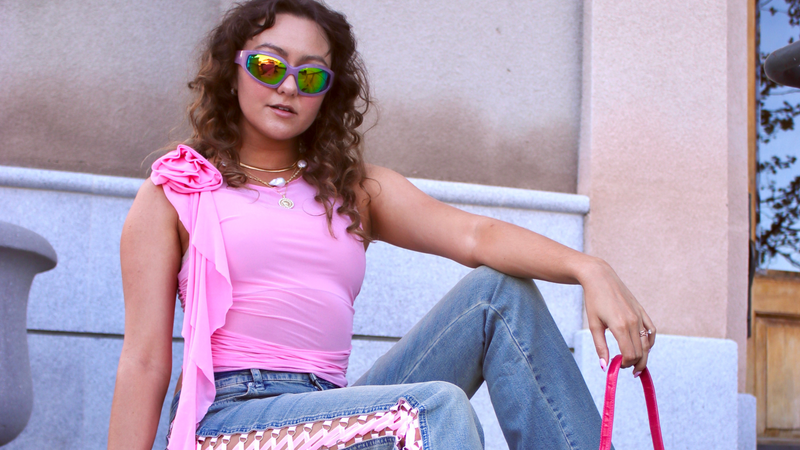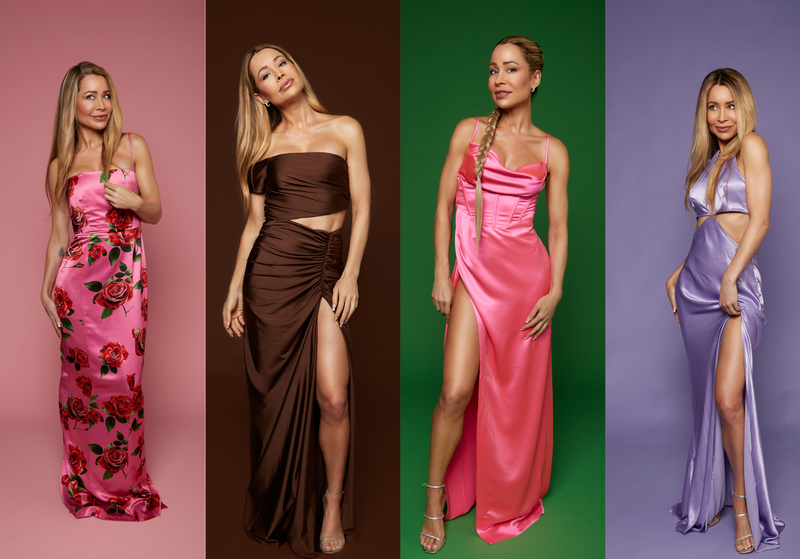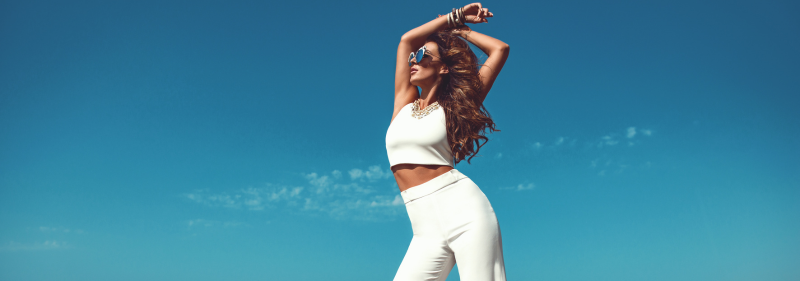All Aaron Esh Knows Is Clothes, “Call of Duty,” and Grinding
The rising London-based designer is a finalist for the LVMH Prize, and he doesn’t know how to switch off.

Aaron Esh’s friends will tell you that he excels at dying. His photographer mate Chris is the sniper, a respected, highly skilled, and integral position on any team worth its salt. The amiable designer Esh, recently recognized as an LVMH Prize finalist, self-describes as a rat, “hiding around corners.” Armed with a riot shield, stun grenades, and a knife, he waits for his opponents. He dies—but so does everyone else at some point. Then he respawns and charges back into the combat zone, just like everyone else. This is , the online first-person shooter game that keeps friends, strangers, and enemies connected through many a sleepless night. Persistence in the face of an absolutely brutal pace, a razor-thin margin for error, and almost certain ruination is the name of the game. Not unlike the fashion industry, perhaps.

Waiting in the lobby for a game to begin with his “fashion bro” teammates (including SSENSE senior menswear buyer Calvin Holmes), Esh wondered aloud if, among the millions of people playing CoD, they thought there was another crew of four fashion people playing together. “Absolutely not” was the only plausible answer. (Lyst doesn’t quantify such things, but after asking other fashion insiders, there’s no way to dispute it.) The guys Esh plays with are some of his closest friends.Esh was raised in East London by his father after his parents separated. “He was the all-encompassing parent,” Esh says, calling his father one of the most important men in his life. Masculinity and what it can look like when unchained from the restrictions of tradition is the fundamental concern of his work as a designer. Where he grew up, he says, you could catch hell just for wearing the color pink. Old-fashioned. Hypermasculine. Meanwhile, Esh was drawn to clothes and how they can forge an identity, sorting you among a specific group with its own internal codes and values. Hip-hop—and Pharrell Williams specifically—put him on a style-obsessed path that led to Raf Simons’s investigations into youth subcultures. Eventually he attended Central Saint Martins, the London school of design known for alumni like Grace Wales Bonner and Alexander McQueen. Indeed, Esh won a McQueen scholarship to attend.In March, Esh became one of nine finalists for the 2023 LVMH Prize. His clothing invites participation. The tied hoodie he showed last February as part of the final collection for his MA at Central Saint Martins is an elegant opportunity to demonstrate one’s own approach to degrees of tightness. But he says the clothing was not conceived as some manifesto on new masculinity. “I never contrived it, do you know what I mean?” he says. The clothing emerged with less foresight and more intuition; the immediacy of daily life. During COVID-19 lockdown he was living with Fiona Hartley, his fashion editor girlfriend, and at one point she wore a puff skirt over a pair of jeans. He clocked it: “It was like, ‘That would be so cool as a one-piece.’ And it just became what it was.” The skirt-trouser is one of his signature pieces—Esh and his friends wear it but most dudes might find it too provocative. The work is “a reflection on the men that I know and the man that I am.”Hartley recalls the moment: “I was just trying it on to see if I wanted to wear it. And he took a picture and I think the next day had made a sample. When he has an idea he’ll just do it straight away. He doesn’t switch off.” (While Hartley gave her interview for this story, Esh was playing .)His collaborators are dear to him. The team photograph above—including Esh’s beloved, joy-inspiring dog Meatball— is meant to represent a truth about Aaron Esh the brand: “The reason [the brand] is strong is not because of me, it’s because there are five or six people who are all working under my name. It’s super collaborative. What inspired me to start in fashion was real authenticity, and I think that only comes from having a team that is all aligned,” he says. Jack Collins, a stylist who began working with Esh through Hartley, says they speak every day on WhatsApp, sharing reference images, street style photos, film stills. “He’s very trusting,” Collins says. “He lights up when he sees someone he’s close to wearing something he’s made.” A garment isn’t finished until he’s dressed one of his friends in it.

How did you dress growing up?Was it difficult to get your hands on BAPE as a teenager?What’s your favorite Neptunes beat?
I have got a photo of me in my BAPE STA trainers [and] A BATHING APE sweatband halfway up my arm, and a trucker cap. I was obsessed with N.E.R.D. and I thought Pharrell was so cool. Then it went into Kanye and how he used to wear a polo top with his collar popped at a time when no one used to do that. It’s really music and the influence of musicians that got me into thinking about how I dress. And then in the mid-noughties, I was super into collecting old Raf Simons; he was probably the person where I understood, “Oh, this is fashion. This has a point of view.” At that time Raf’s work was about taking photos of kids in the street in Paris, and then putting them on the runway. And how them skateboarders in Paris wore their clothes inspired the clothes. And that’s a real visceral reference—not a box logo, the actual style codes of a very specific subculture of people. That’s what I see as fashion: More than glamour or beauty, it’s style codes and identity.I must have been 12 or 13, and they opened a store in Carnaby Street, a row of stores off the side road of the main shopping area in London. I remember going with my friend, getting on the bus, and waiting outside. A pair of Air Force 1s was like £60, and a pair of BATHING APE was 150, I think. I would save the money to go get these trainers. It’s so weird now because Pharrell got this big job, and it’s like, “Oh, what’s he know about fashion?”“Provider.”

What was the first piece you designed?What made it awful?What part of the process is most exciting?
I was at school and it was some awful silk shirt that was long with big safari pockets.I made it myself. I’m not the best sewer; I think if you’d have blown on it, it would have fallen apart. School is seven years doing fashion; it’s like being a doctor. Them school collections that you do are a good testing ground to work your process out. I read in the press release for the LVMH Prize that there’s four or five self-taught people, and that’s amazing. The thing that I learned from fashion school was process. We just finished last season—we'll design a new season for June—and it’s like, “OK, I’ve got to design it.” Within the five-month period of designing a collection, I probably spend three days designing it. Three or four days of actual drawing. It’s no different from what I was doing at uni, it’s just a more practiced, refined process.I love the research. We’ve got a Google Drive that’s like thousands of images that are categorized in terms of outerwear, knit, mood, menswear, womenswear, couture, specific designers. When I was at uni, I used to print it all out and put it into piles, and I’ve digitized that process now. On my phone, I can take a screenshot and then just drop it straight into my Google Drive. Out of those thousands of images, probably 40% are eBay, Vestiaire, or 1stDibs. Because you get to see these incredible garments: some old Madame Grès gown that belongs in a museum that the person is selling and they’re taking pictures of the inside of it—and you get to see how it's made. Like, “that’s an incredible finish on this armhole, let’s do that on this piece,” referencing them very sort of specific finishings that you can only really get through looking through an archive. I love that.And then it’s the team. When I turn up for, say, a lookbook shoot, I feel like I bring the clothes. And there’s Jack who does the styling; John [Allan] who does the hair; Jamie [Reid] does the art direction—we’re kind of mates. And let’s say with the hair, he’d done this kind of wig and he cut it with a razor blade and it looked like shit. But it was amazing shit hair. And he didn’t need to say to me, “I’m doing this hair.” And when he finished, I loved it. We all just get it.

What’s Aaron Esh about?I also appreciate that you made a baseball cap that feels so accessible, like anyone who wants to stick a toe into the Aaaron Esh world can do that with the cap. Maybe this guy isn’t ready to put on the comma shoes or puff skirt trousers just yet, but he can wear the cap.At various points in our conversation money and the financial realities of your work have come up. It’s unavoidable. What don’t people understand about getting a small brand off the ground?
It’s about taking the ideas and concepts of luxury fashion that are historically—luxury fashion is pointed at 0.01% of people. It is the ladies who lunch in Paris, the absolute ultra elite. And I love it. But I think it’s taking them concepts of sophistication and elegance and chic, and having them rooted in reality. Having Jack or John that walk down East London main high street, that may have in the past felt intimidated by wearing something that’s elegant, and giving them the confidence [to wear those clothes].That’s exactly what it was supposed to be. We just sent SSENSE back like £5 per unit because originally they bought it at a certain price and I spoke with my sales team and I was like, I don’t want this to be £120; this baseball hat has to be £90. I don’t care about the money with the caps. The difference of making £5 per unit is nothing. It’s coffee. It’s so much cooler if everyone has it.We have to book another hour. Genuinely, the most taxing thing in my life is the worry and anxiety about money. Cash flow. I guess every business has that, but getting any start-up off the ground, let alone a fashion brand that sells twice a year to wholesale that—no offense—has shit margins. Might as well not do it.I’ve got a chance of winning €300,000. It’s life-changing money. And I genuinely don’t care about the money. The reason that I feel like this would change my life is that I could give three or four people a job. And I could invest into the business. To me, the anxiety is not having money to run the business. I’ve never been someone that cares about having money in my bank—just because I’ve never had it. I’ve always found the entrepreneurial side exciting. I sold sweets out of my locker at school. [Now] I’m in the business of selling clothes.
 Y2K Trend Spotlight: Ruffles and Rosette Details With the growing popularity of Y2K inspired fashion this year, two Y2K trends, in particular, have been standing out in the crowd: ruffles and rosettes. Lately, there has been a resurgence of those ruffled fairy-inspired dresses that grew to popularity in the early and mid-2000s, as well as clothes embellished with fabric rosettes (which are so fitting for Spring!). Both of these details are sweet, yet edgy and fun, and they are easy to incorporate into your existing wardrobe! Plus, if you’re already a fan of Barbiecore, Fairycore, or Mermaidcore looks and trends, you’ll love these trendy details too! One brand in particular that I have been loving lately that has really been embracing the Y2K ruffle and rosette trends is Blumarine.
Y2K Trend Spotlight: Ruffles and Rosette Details With the growing popularity of Y2K inspired fashion this year, two Y2K trends, in particular, have been standing out in the crowd: ruffles and rosettes. Lately, there has been a resurgence of those ruffled fairy-inspired dresses that grew to popularity in the early and mid-2000s, as well as clothes embellished with fabric rosettes (which are so fitting for Spring!). Both of these details are sweet, yet edgy and fun, and they are easy to incorporate into your existing wardrobe! Plus, if you’re already a fan of Barbiecore, Fairycore, or Mermaidcore looks and trends, you’ll love these trendy details too! One brand in particular that I have been loving lately that has really been embracing the Y2K ruffle and rosette trends is Blumarine. 


